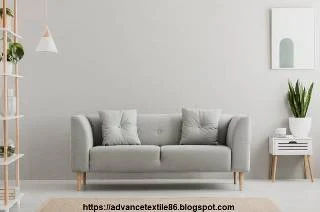Olefin fiber
Olefin fiber is a synthetic fiber made from polyolefin. These are the products of the polymerization of propylene and ethylene gas. In order to use the products like fibers, the polymerization must be carried out in a controlled manner with the help of special catalysts which give a chain with a few branches. These fibers are characterized by their resistance to moisture and chemicals. Of the two, polypropylene is preferred for general textile applications because of its higher melting point; And the use of polypropylene has progressed rapidly since its introduction. The fibers prevent dyeing, so colored olefin fibers are produced by adding dyes directly to the polymer before or during melting. A range of properties can be provided in olefin fibers through the use of additives, polymer variations, and different process conditions.
Olefin
fabric refers to synthetic fibers formed by linear macromolecules polymerized
by olefin. It is a man-made fiber whose fiber structure is a long-chain
synthetic polymer. This polymer is made up of at least 85% by weight of
ethylene, propylene, or other olefin monomers, but without the polyolefins of
rubber fiber, it has a rod-like structure with a smooth surface of a formless.
Olefin fiber characteristics
i.
Olefin fibers have great bulk and cover properties when there is a less
specific gravity
ii.
It has low moisture absorption, but it can wick moisture and dry quickly.
iii.
It is abrasion, stain, sunlight, fire, and chemical resistant
iv.
It does not dye well but has the advantage of being colorfast
v.
It has a low melting point, textiles can be thermally bonded
vi.
These fibers have the lowest static of all manufactured fibers and a medium
luster
vii.
It retains its strength in wet or dry conditions and is very resilient
viii.
These fibers are resistant to deterioration from chemicals, mildew,
perspiration, rot, and weather
ix.
These fibers are very lightweight and comfortable.
x.
These are highly stain resistant.
xi.
It can be multi- or monofilament and staple, tow, or film yarns
xii.
Its physical characteristics are a waxy feel and colorless.
Olefin fiber advantages
i.
Olefin fiber wicks moisture and dries quickly
ii.
It resists fading, mildew, chemicals, and insects
iii.
It is highly stain resistant
iv.
It is colorfast
v.
It has good abrasion resistance property
vi.
It is strong
vii.
It is lightweight
viii.
It is easy to clean
Olefin fiber disadvantages
i. Olefin fiber has almost completely hydrophobic properties,
ii.
It is not conducive to making most clothes.
iii.
It sometimes generates static electricity and pilling.
iv.
It is a very heat-sensitive fiber
v.
It can be damaged by Friction
vi. It is very difficult to dye due to its low absorbency rate.











0 Comments